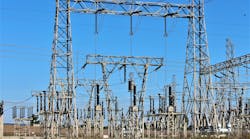January is a great time to reflect on what has been and to plan for what will be. But before I focus on industry trends, I'd like to come clean about some past-due changes in my own life.
When I hit 50 last April, I looked to see what the mirror had to say: balding, I could live with that; graying, not a big deal; 20 pounds overweight, not acceptable. I needed to make a change.
An engineer by training, I decided to consider my body a machine under my control. I instructed my body to conform to a strict regimen of diet and exercise. Nine months later, I'm feeling better than ever. I'm a slimmed down, fit version of the old me, ready to take on my next 50 years.
It's Time for Utilities to Get Buff
Many utilities have decided that “now” is a good time for a checkup. With the demise of easy trading money and the collapse of all sorts of business ventures, utilities are staring in the mirror and not liking what they see. As utilities clean up their balance sheets and get out of money losing ventures, they increasingly focus on the businesses they know best. Today, with a weak economy, the old regulated transmission and distribution business with its steady regulated returns is looking mighty good.
Conversely, those innovative, risk-taking utilities are in the doghouse. Analysts and investors have lost their patience with promises and have punished their stock prices. I don't expect many utilities try to reinvent themselves in this decade, at least not total overhauls like the one Montana Power undertook when its executives decided they could provide shareholders better returns by going into the long-haul, fiber backbone business. The Touch America buildout, financed through the sale of Montana Power generation and T&D assets, is a sad situation with its stock now 94% below its 52-week high.
In this issue, the editors of T&D World look into the future and see that while some utilities still hold onto the nostrum that bigger is better and continue to seek merger opportunities, they are in the distinct minority. Most utilities are content to focus on generation and regulated T&D services. Others are still plugging energy services to commercial and industrial customers, and a select few continue to offer retail services in deregulated states.
Contributing writer Jim Dukart reports on the reduced pace of mergers and acquisitions. M&A activity has been impacted now that former acquirers are frantically selling off assets in hopes of staving off insolvency. Dukart found a few big dogs looking to acquire, but for the most part, utilities that were takeover targets can relax.
Independent stand-alone transmission companies are making the news. The Federal Energy Regulatory Commission (FERC) is requiring transmission-owning entities to turn over operation of their systems to independent third parties. Some utilities have decided to sell their transmission assets and purchase transmission service instead. In North America, utilities including TransAlta, Consumers Power, Illinois Power and DTE have sold or are selling their transmission assets.
Other utilities are joining together and rolling their transmission assets into limited liability companies, and becoming passive asset owners. Each owner then receives its portion of the resulting revenue stream. Asset owners can ultimately cash out of the transmission business if and when these limited liability companies go public.
On the distribution side, most utilities are holding pat. Regulators are still reluctant to grant rate increases, forcing utilities to run the business, while looking for technologies to improve operating efficiencies and lower costs.
Chief Technical Editor Phil Musser researched the status of the energy services industry. At one time, 70% of investor-owned utilities owned energy service subsidiaries. Musser reports that the energy services segment is alive and growing. Unfortunately, competition is fierce and many utility-affiliated energy services companies are ill-equipped to compete against the many independent and vendor-owned companies.
What About Retail?
With the scaling back of state deregulation initiatives, we've seen plenty of retail companies go belly up. Still, deregulation is not dead and customers in several states have legitimate choices. Perhaps the healthiest retail company is Centrica plc, which honed its retail skills in the deregulated U.K. utility industry by cross-selling gas and electricity under the British Gas brand. Centrica recently purchased 988,000 retail gas and electricity customer relationships in Alberta, Canada. In the United States, Centrica has 640,000 customer relationships with its Energy America and New Power brands, and soon will add 860,000 AEP customers.
With all the excesses we've suffered in the past 10 years, it is time for a health check. Promises are out; cash flow is king. Look for utilities to trim excess fat as they reshape their companies. It is a good time to be in the core utility business again.

